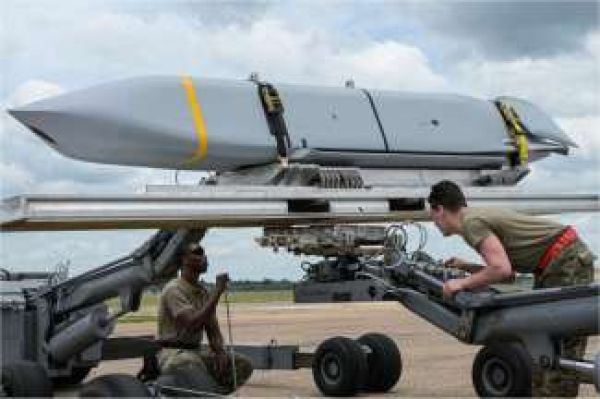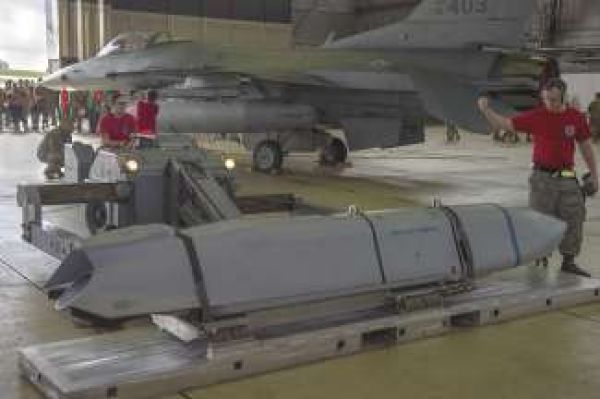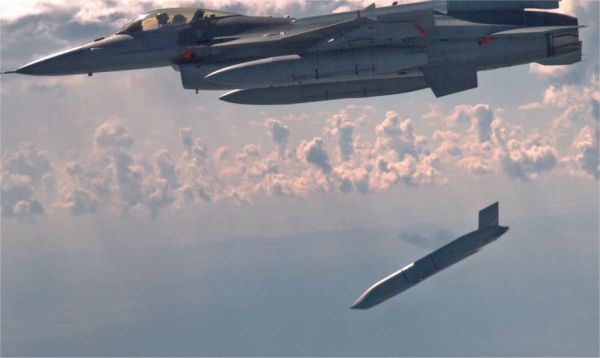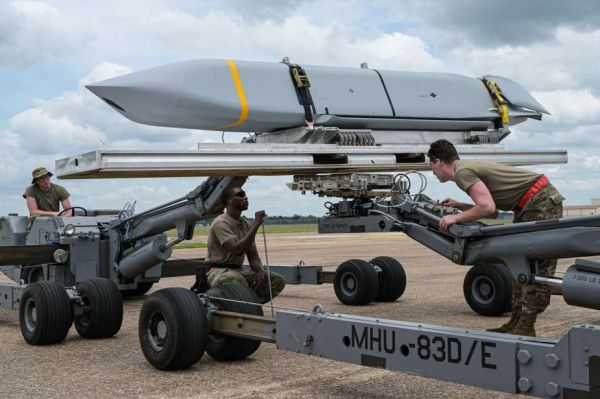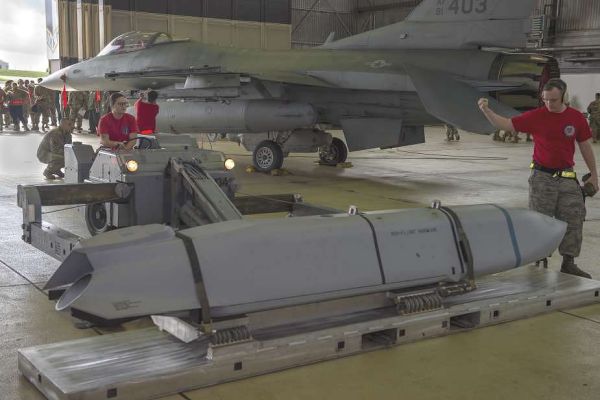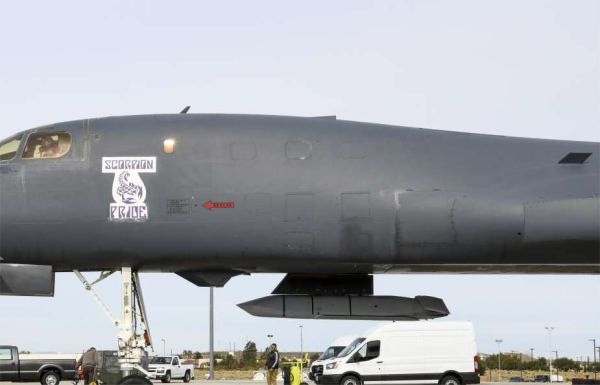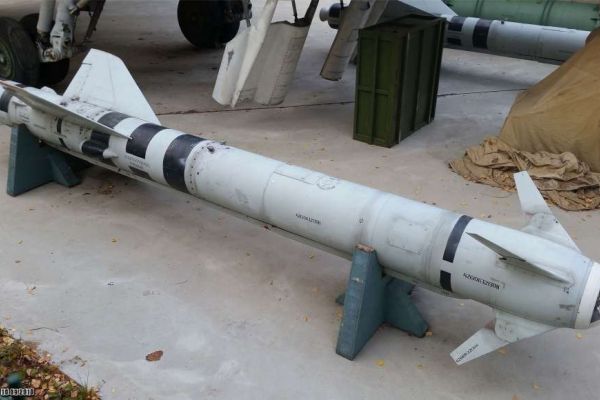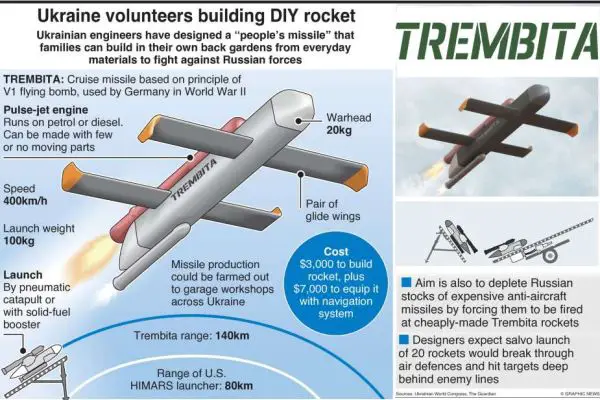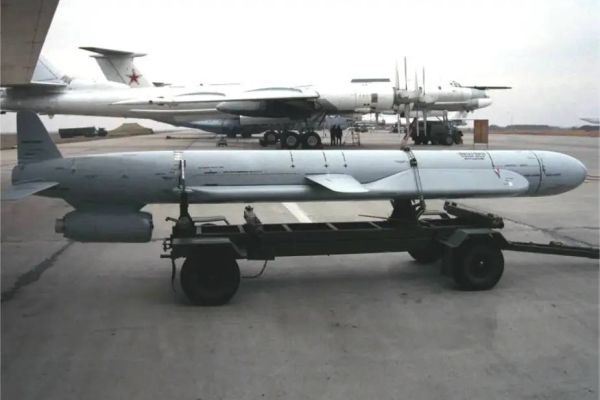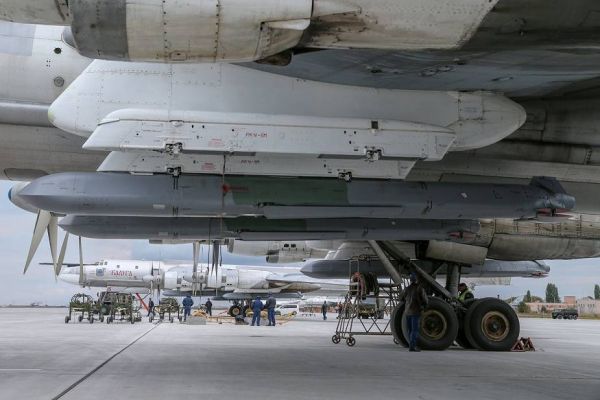Cruise missiles.
JASSM AGM-158.

The AGM-158 Joint Air-to-Surface Standoff Missile (JASSM) is a long-range, precision-guided cruise missile developed by Lockheed Martin for the United States Air Force (USAF) and allied nations. This advanced weapon system is designed to strike high-value, well-defended targets from a significant distance, minimizing the risk to the launching aircraft. The JASSM’s combination of stealth technology, precise guidance, and a powerful warhead makes it a crucial component of modern military strategy.
Country users: Australia, Finland, Poland, United States
Description
The development of the AGM-158 JASSM began in the late 1990s, driven by the USAF's need for a low-observable, standoff missile capable of delivering precision strikes against heavily defended targets. Lockheed Martin was awarded the contract to design and produce the missile, with manufacturing and production commencing in 1998. The missile was declared operational by the USAF in 2003.
The JASSM has undergone several significant upgrades since its inception. The extended-range variant, known as the JASSM-ER, was first tested in 2006, and the first batch was delivered to the USAF in March 2014. The JASSM-ER features a larger internal fuel tank and a more efficient turbofan engine, allowing it to reach targets up to 1,000 km away, compared to the standard JASSM's range of 370 km. Despite these enhancements, the JASSM and JASSM-ER share identical airframes, making them indistinguishable by appearance alone.
The USAF has procured over 2,000 JASSMs and plans to acquire up to 10,000 in total. Internationally, the missile has been deployed or is on contract for deployment by Australia, Finland, the Netherlands, and Poland. In June 2017, the USA deployed over 10 JASSMs to South Korea for use by USAF F-16 fighters.
The AGM-158 JASSM saw its first combat use in April 2018 during strikes against Syria’s Barzah Research Development Center, where 19 JASSM-A missiles were deployed. In October 2019, multiple JASSM-ER missiles were used in the operation against ISIS leader Abu Bakr al-Baghdadi, demonstrating the missile's capability in high-profile military operations.
One of the critical aspects of the JASSM is its low-observable airframe, designed to evade sophisticated enemy air defenses, including systems like the S-300 and its newer variants. The missile's stealthy design, coupled with its advanced guidance systems, allows it to penetrate dense air defense networks and strike high-value targets with high accuracy. The JASSM-ER will eventually be upgraded with a weapons data link (WDL), enabling course corrections after launch, a vital feature for engaging road-mobile and maritime targets.
In 2018, the USAF initiated the development of a further extended variant called the AGM-158D, also known as the JASSM-XR or “Extreme Range.” This version is expected to have a range of approximately 1,800 km, with deliveries planned to start in January 2024.
JASSM AGM-158 variants:
- AGM-158B JASSM-ER: In response to the need for enhanced range capabilities, the U.S. Air Force initiated the development of an improved variant of the AGM-158, resulting in the JASSM-Extended Range (JASSM-ER). This variant, designated the AGM-158B in 2002, utilizes a more efficient engine and a larger internal fuel capacity while maintaining the same external dimensions as the original JASSM. These enhancements enable the JASSM-ER to achieve a range of over 575 miles (925 km), significantly surpassing the 230-mile (370 km) range of the baseline JASSM.
- AGM-158C LRASM: Building on the JASSM-ER platform, the AGM-158C Long Range Anti-Ship Missile (LRASM) was developed as a specialized anti-ship variant. The LRASM incorporates a new seeker specifically designed for maritime targets, enhancing its capability to engage enemy vessels. The U.S. Navy officially designated the air-launched LRASM as the AGM-158C in August 2015. The LRASM achieved Early Operational Capability (EOC) on the B-1B Lancer in December 2018, marking its readiness for deployment in naval strike missions.
- Palletized JASSM (Rapid Dragon): In an innovative approach to expand the deployment options for the JASSM, the Air Force Research Laboratory, in collaboration with Lockheed Martin, developed the Rapid Dragon system in 2020 and 2021. Rapid Dragon is a palletized launcher module capable of deploying multiple AGM-158 missiles, designed to be airdropped from cargo aircraft such as the C-130 or C-17. This system allows for a rapid surge of missile firepower using unmodified airlift assets, providing a cost-effective solution for air forces that do not possess dedicated bombers capable of carrying large numbers of air-launched cruise missiles (ALCMs). This development is particularly beneficial for allied air forces, enabling them to enhance their strike capabilities using existing transport aircraft.
Technical Data
-
Design
The AGM-158 JASSM is 4.26 meters long, with a diameter of 0.55 meters, a height of 0.45 meters, and an extended wingspan of 2.7 meters. The missile weighs approximately 1,023 kg at launch. The missile's airframe is angular, similar in design to the Taurus KEPD 350, but with more rounded and fluid lines. When carried by aircraft, the missile’s fins and wings are folded and are unfolded by small explosive charges upon release.
-
Warhead
The AGM-158 JASSM is equipped with a 432 kg WDU-42/B penetration and blast fragmentation warhead, designed to destroy hardened targets such as bunkers and reinforced structures. The warhead's design ensures significant blast and fragmentation effects, making it highly effective against a wide range of target types.
-
Propulsion
The AGM-158 JASSM missile is powered by a turbojet engine in its standard configuration, while the JASSM-ER variant uses a more efficient turbofan engine. This propulsion system allows the standard JASSM to achieve a range of 370 km, while the JASSM-ER can reach distances of approximately 1,000 km.
-
Guidance System
The AGM-158 JASSM employs a sophisticated guidance system that includes an Inertial Navigation System (INS) and a Global Positioning System (GPS), similar to those used in JDAM and JSOW bombs. For terminal guidance, the missile uses an Imaging Infrared (IIR) seeker, which compares the actual image of the target with a pre-stored reference image. The missile can store three-dimensional targeting models of up to eight intended targets, and it is capable of achieving a Circular Error Probable (CEP) of within 3 meters.
-
Combat Use
The AGM-158 JASSM is compatible with various aircraft, including the B-1B Lancer, B-2 Spirit, B-52H Stratofortress, F-15E Strike Eagle, F-16C/D, F/A-18C/D, and potentially the F-35 Joint Strike Fighter. The B-1B can carry up to 24 missiles, making it the primary platform for JASSM deployment. The B-2 can carry 16 missiles, while the B-52H can carry 12 internally on rotary launchers. Fighter aircraft, such as the F-15E, typically carry one missile under each wing, though in May 2021, the USAF loaded an F-15E with five JASSMs. If the F-35 is certified to carry the JASSM, it would have to do so externally due to the missile's size.
Specifications
-
Type
Air-launched cruise missile
-
Country users
Australia, Finland, Japan, Poland, South Korea, Ukraine, United States
-
Designer Country
United States
-
Propulsion
Teledyne CAE J402-CA-100 turbojet
-
Launch Weight
1,020 kg
-
Range Missile
- JASSM (AGM-158A): 370 km (230 miles)
- JASSM-ER (AGM-158B): 925 km (575 miles) -
Speed Missile
Subsonic, approximately Mach 0.7
-
Aircraft Launchers
F-15E, F-16, F/A-18, F-35, B-1B, B-2, B-52, and other compatible NATO aircraft
-
Guidance Systems
- Primary: Inertial Navigation System (INS)
- Secondary: GPS guidance
- Terminal: Infrared homing and Automatic Target Recognition (ATR) for final approach -
Dimensions
Length: 4.27 m; Diameter: 0.45 m; Wingspan: 2.4 m
























